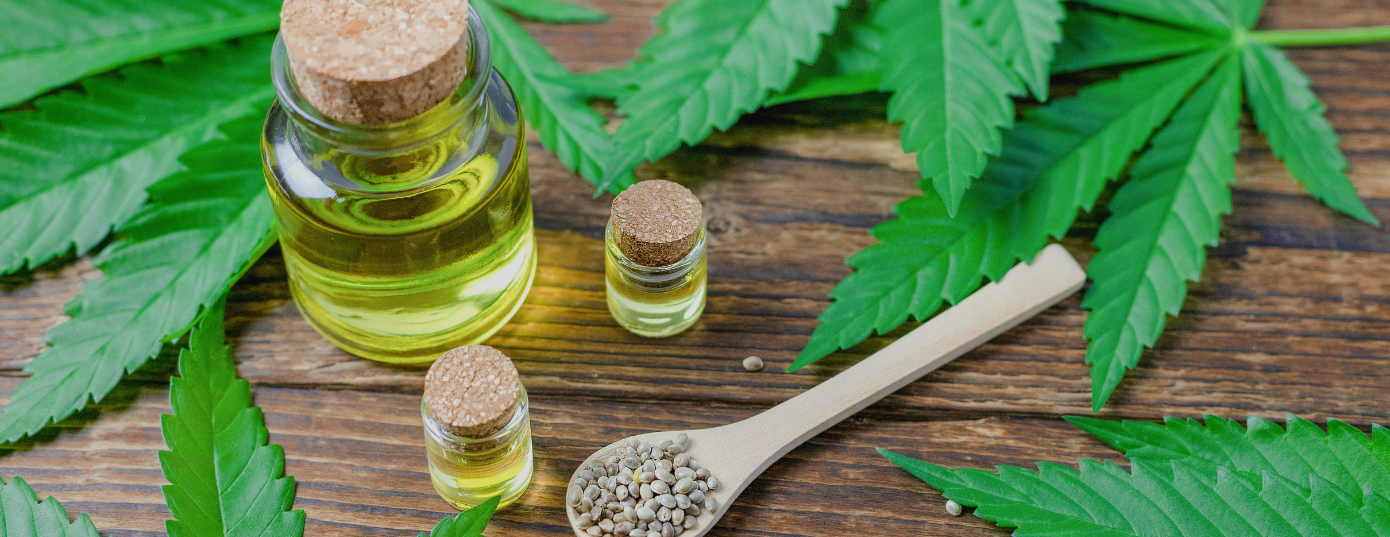Experts claim that cannabis hemp can actually help the world move towards a better and more sustainable place. However, the general public seems to have a disrupted idea about what it is exactly; they jump to conclusions about hemp getting people high only because it comes from cannabis, ultimately confusing it with marijuana and spreading the wrong idea.
Despite loud, controversial conversations and debates about marijuana in the modern world, people are most likely to have no idea about the fact that hemp and marijuana are different things. We’ve all been there, fixed on the idea that the hemp and marijuana plant are interchangeable synonyms, and even though they’re related, they actually have different characteristics.
There’s a ton of different myths surrounding hemp, like the misconception about this plant having psychoactive effects (or you know, getting you high) or people claiming that it’s illegal to grow it (spoiler alert: it’s not–mostly).
In this article we’ll dive into the similarities and differences between these cannabis subspecies, educating us once and for all.
Hemp vs. Cannabis: Plants From The Same Species
Remember when I said that hemp and marijuana are used as interchangeable words? Well, it’s not entirely wrong.
According to Healthline, both plants actually come from the same species, which is a type of flowering plant in the cannabaceae family. Here’s the catch: while scientists don’t differentiate between the two plants, the law does. The latter takes THC, or the tetrahydrocannabinol content into account; naturally, the one without the psychoactive compound –hemp– is legal, making the other one –marijuana–illegal.
Technical Differences Between Hemp & Cannabis
Back in 1979, book author Ernest Small proposed to define hemp as a cannabis plant that contains up to 0.3 percent of THC; because the psychoactive compound is so low, it is very unlikely to get you high.
As mentioned in Healthline, the famous book The Species Problem in Cannabis: Science & Semantics has one disclaimer: there’s no difference in the taxonomy between hemp and marijuana, but to stop the confusing madness from spreading any further, Small proceeded to propose the 0.3 percent rule. He also acknowledged that it’s really an arbitrary number, but we have to start somewhere, right?
The plant called marijuana is also a cannabis plant, but it contains much more than 0.3 percent of THC, and the sole idea is to feel its effects and get you high. Oxford Dictionary defines it as “cannabis, especially as smoked or consumed as a psychoactive (mind-altering) drug.”
As you may know, this cannabis plant comes from a subspecies called cannabis indica and cannabis sativa. Both of these subspecies contain different percentages of cannabinoids, called cannabidiol (CBD) and tetrahydrocannabinol (THC). These two compounds bring out different characteristics into each strain, which are manifested in diverse ways through the human body.
Cannabis & Its Uses
Marijuana
Marijuana or weed is best known and used for its psychoactive effects, both for relaxing or increasing energy, depending on the strain or subspecies you consume.
On one hand, cannabis sativa strains have more THC than CBD. These strains are recommended to use during daylight so you can seize the increased focus, serotonin and anti anxiety it provides.
On the other hand, cannabis indica strains are recommended to use during nighttime to fully grasp the effects of mental and muscular relaxation, as well as increased dopamine and appetite.
To read more about the effects each subspecies has on humans, check out this article that talks in depth about the similarities and differences of these two magical compounds.
CBD
CBD is a compound found in cannabis.
According to MSU Today, there’s been more clinical research (although limited) on this cannabinoid and the potential effects in the human body when used as medicine. For example, clinical research has found that CBD is effective at treating epilepsy, pain, anxiety, nausea, glaucoma and even multiple sclerosis and opioid-dependency disorder. The bad news is that medical research continues to be restricted, so we’ll still have to wait to hear the jury out on that subject.
Hemp
It’s no secret that our ancestors have been benefiting from cannabis since the beginning of time. Hemp actually played a great part in our history more than 10 thousand years ago, where people all across Europe and Asia gained advantage of cannabis by making hemp ointments for pain, fiber for handy ropes, and used its seeds for food.
Nowadays, this magical species is grown to create other types of everyday life products. Here are some, as listed by Healthline:
- Animal feed
- Clothing
- Food products
- Oil products
- Paper
- Plastic
- Textiles
Hemp Is Actually Legal– In Some Places
Back in 2018 in the United States, a Farming Bill that saw hemp in a new light was passed.
According to Brookings, federal law did not differentiate hemp from cannabis sativa or cannabis indica for decades. In fact, everything proceeding from the cannabis plant was made illegal in 1937 under the Marihuana Tax Act, eventually making it illegal in 1970 under the Controlled Substances Act. The latter act effectively banned cannabis of any kind, including hemp.
Back to the 2018 Farming Bill, with new regulations come new restrictions, of course:
- Hemp cannot contain more than 0.3 percent of THC.
- Cultivated hemp shall have significant, shared state-federal regulatory power over hemp cultivation and production.
- The law outlines actions that are considered violations of federal hemp law, so a cultivation license is mandatory.
Across the globe, countries such as Canada, China, Estonia, France, Germany, India, Italy, The Netherlands, Romania, and many others have legalized hemp to make everyday products. However, most of the legislation took place in this century, meaning their reconciliation with hemp is relatively new. We will need to wait for better results and see if other countries follow their lead towards a more green path.
Hemp Paper: Towards A More Sustainable Future
Hemp grows faster than trees and other crops, and this is actually great news! Since it thrives in rapid ways, hemp is considered to be a more sustainable option for making products such as papers and textiles.
Let’s talk about the paper industry for a second, shall we?
In this article about hemp and its uses, my buddy Pipo mentions that making paper from trees is one of the human activities that emits the most greenhouse gasses. Around 6.7 pounds of CO2 for each pound of paper, to be precise. And that’s not all– Greenpeace affirms that about 15 million trees are lost per year due to the paper industry; plus, 40% of pulp wood is used for paper manufacture and its derivatives.
Since hemp has wonderful properties and it's faster to grow, more and more people are begging industries to use hemp instead of trees. Here are some benefits of hemp paper, as listed by Woodland Paper:
* Hemp is one of the most strong natural fibers in the world, beating paper tree’s longevity and durability.* Hemp paper can be recycled up to 8 times, compared to paper made from wood pulp that recycles 3 times only.
* Hemp pulp does not require bleaching or adding as many chemicals as wood pulp; by ditching paper made out of trees, we’re also decreasing the number of toxins and chemicals that pollute our Earth’s water supply.
* Paper from hemp fiber resists decomposition and does not yellow or brown with age, as paper from trees does.
* While trees can take between 20 to 80 years, it takes about 4 months for hemp stalks to reach maturity, making it a much faster crop yield.
Imagine where we’d be if, once again, we made hemp our ally.
Author: Mary Jane
Healthline (2020) Hemp vs. Marijuana: What’s the Difference? Retrieved from https://www.healthline.com/health/hemp-vs-marijuana
Hudak. J. (2018) The Farm Bill, hemp legalization and the status of CBD: An explainer. Brookings. Retrieved from https://www.brookings.edu/blog/fixgov/2018/12/14/the-farm-bill-hemp-and-cbd-explainer/
Malone, T. (2021) CBD, marijuana and hemp: What is the difference among these cannabis products, and which are legal? MSU Today. Retrieved from https://msutoday.msu.edu/news/2021/cbd-marijuana-and-hemp
McLaughing, A. (2019) The Shocking Link Between Paper and Hemp. Woodland Paper. Retrieved from https://www.woodlandpaper.com/2019/03/paper-vs-hemp/


0 comments